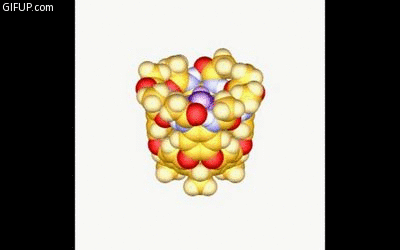by Ashley Mooney
New studies show that psychopathy in criminals is the best predictor of future offenses.
Kent Kiehl, associate professor of psychology at the University of New Mexico, spoke Friday, April 20 on his research on psychopathy—a personality disorder characterized by a persistent pattern of disregard for the rights of others and the rules of society—in prison populations in the United States and Canada. Using a trailer equipped with a mobile MRI unit that could travel to prisons, Kiehl scanned the brains of 2,000 inmate volunteers, which included 200 female offenders and 250 juvenile offenders, in medium and maximum-security prisons in Wisconsin and New Mexico.

Mugshot of Charles Manson, an infamous psychopath. Courtesy of Wikimedia Commons.
“Psychopathy is currently considered the single best predictor of future behavior,” Kiehl said. “If you have a diagnosis of psychopathy and you’re going for parole or something, they view that as a risk factor.”
He found that compared to the average offender, 60 percent of psychopaths reoffend within the next 200 days. Maximum-security juveniles showed a similar pattern: 68 percent of individuals who were at high risk for psychopathy reoffended.
Using images of the brain, Kiehl said he could predict psychopathy as well as one can with clinical error.
“If you have different behavior, you’re going to have a different brain. Just like men and women: different behaviors, different brains.”
Kiehl noted the role of the MAOA gene in violent behavior. He said if one has the gene and comes from a stressful environment, he or she has a significantly elevated risk for committing a violent offense. The gene may contribute to variability in grey matter density in some parts of the brain, which is a risk factor for psychopathy.
Although Kiehl noted the strengths of group therapy in prisons, he said treatment might actually make things worse. Treating psychopaths leads to “violent failure,” meaning that they have a high chance of violent recidivism (relapsing into the behavior).
In juveniles, however, Kiehl said positive reinforcement techniques have reduced recidivism by deemphasizing punishment and treating impulsivity. The kids in the program show a 50 percent reduction in violent recidivism compared to those who undergo normal treatment. Besides the reduction in violent recidivism, the juveniles are also less likely to commit the same types violent crimes, such as murder.
Diagnosing psychopathy and using cost-effective treatments, such as positive reinforcement, can help alleviate the burden of the prison system in the United States.
“We have a problem in the United States: We incarcerate a lot of people,” he said. “We incarcerate more per capita than any other country. It’s expensive—it costs $2.34 trillion per year, which is about the same as the annual estimate for all health care [in the country].”
















